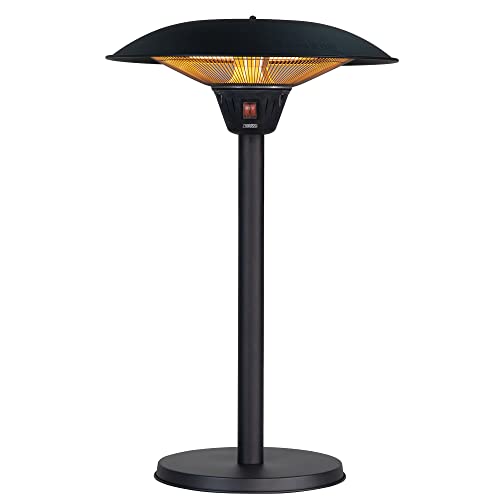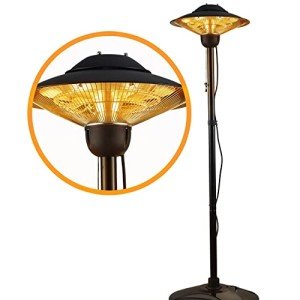10 Outdoor Gas Patio Heater Tips All Experts Recommend
페이지 정보

본문
 Which Outdoor Gas Patio Heater Should You Choose?
Which Outdoor Gas Patio Heater Should You Choose? A gas patio heater near me patio heater will enhance the usability of your outdoor space, regardless of whether you choose sleek and space-saving models or freestanding, pyramid-shaped heaters. Which one should you choose then?
A gas patio heater near me patio heater will enhance the usability of your outdoor space, regardless of whether you choose sleek and space-saving models or freestanding, pyramid-shaped heaters. Which one should you choose then?Think about the cost of fuel and availability, the size and quantity of heat required. Find out more about these factors here.
Size
A gas patio heater can prolong the time you can spend in your outdoor space and make it more comfortable. These heaters come in various designs, sizes, and outputs based on the kind of fuel employed (natural gas or propane). There are wall-mounted models aswell as ceiling-mounted models.
Most outdoor patio heaters require an additional propane or LPG gas cylinder to function. The cylinder is usually located at the base of the heater or, in freestanding models, in a separate cannister that is placed underneath the unit. Some models can be connected to a gas supply piped directly into your home. This requires a fixed installation done by a professional.
In some cases, the patio heater will be connected to the gas regulator on the gas cylinder. This allows you to disperse the gas through the heater in a secure and controlled manner. The patio heater's instruction manual will specify the size and type of gas cylinder is required. The manual will usually state whether the heater operates with propane or propane LPG. This is because the two fuels operate at different pressures and are not interchangeable without changing the gas regulator in the cylinder.
A patio heater can be positioned on the ground, on a stand or as a table-top model and there are numerous finishes available to match your outdoor decor. They also create a beautiful flame, which can create a rustic and natural aesthetic.
A gas patio heater that is permanently attached to a wall or ceiling typically comes with the control system that includes an on/off switch, dimmer switch and remote control. The controls will vary depending on the model, but they should be easy-to-use and flexible to meet your outdoor heating needs. No matter what model you choose, make sure there is enough space between the heater and any material that is flammable. Always check the manufacturer's directions for guidance on this.
Design
Many homeowners are able to afford outdoor patio furniture and a deck or veranda for enjoying the sun, but they may find that when the temperature drops they are forced to go inside. A gas patio heater can stop this, and let people make use of their patio space all throughout the winter and fall months.
There are many models available, each with their own pros and pros and. Different heaters are required depending on the type and size of the area to be heated.
The classic mushroom-shaped natural gas or propane heater is among the most well-known types of outdoor patio heaters. The heaters are mounted on a pole and have the burner that heats the air before radiating it through a perforated filter. A reflector above the burner is used to reflect heat upwards, which reduces heating costs.
These patio heaters are well-known to the majority of people since they are commonly used in restaurants to keep their outdoor dining areas warm and comfortable as the temperatures drop. They are also available for home use and are an affordable way to extend the use of your deck or patio.
Some models are freestanding while others can be mounted to a wall or ceiling. Freestanding heaters are beneficial because they can be moved around when people move about the patio. This flexibility is particularly useful in commercial areas where people move around throughout the day. The heating can be adjusted to accommodate the movements of employees and guests.
Another option is the overhead commercial outdoor infrared heater, which can be recessed into a flat ceiling. These models are ideal for patios with minimalist designs. They require low clearances. These models can be powered by propane or natural gas, and are available in stainless-steel to minimize corrosion.
If a patio is outfitted with natural gas lines, a permanent natural or propane gas heater is more suitable than a portable model. These heaters are easy-to-install, adjustable in height, and don't require any additional maintenance other than regular cleaning. These heaters are also safer than electric ones, since there is no danger of poisoning with carbon monoxide.
Fuel
The type of fuel used to power an outdoor gas patio heater determines how well the heater will perform. It also impacts the price of patio gas and ease of use. The most popular types of propane-powered patio heaters include propane, natural gas patio heater (https://www.longisland.com/profile/carcougar2) gas and electric. Natural gas patio heaters are suitable for companies with access to a long-lasting gas line, whereas propane models have the additional benefit of being portable and simple to install since they use large propane tanks.
Gas patio heaters are characterized by their high output of heat and the ability to heat up to 215ft2. They typically have burners on top of poles which burn either natural gas or liquid petroleum gas (LPG), propane or butane. The flames then heat up a perforated metal screen, which emits warmth. A reflector above the burner reduces heat loss by reflecting infrared light back towards the heater and its surrounding areas.
Modern patio heaters are often designed with an eye for aesthetics and blend seamlessly into high-end outdoor living spaces, and complementing architectural styles. Some even use infrared heating, which avoids burning energy by heating objects and people directly, rather than the air around them. This makes them more efficient and efficient, as they are less impacted by windy conditions which can affect traditional methods of heating.
The Bromic Tungsten Smart-Heat overheard gas patio heater, for example is equipped with a high-tech infrared system that offers immediate and constant warmth. This lets patrons enjoy the comfort of warm spaces without having to step away from their tables or chairs. In addition this heater has been designed to perform in windy conditions by incorporating wind resistance features.
A good gas patio heater can enhance a business's outdoor dining and drinking experience by providing an inviting center point that stifles the chilly night air and provides a comfortable place to gather. Whether customers are drinking at the bar, or enjoying a dining out on the patio, a gas heater can make them feel at ease and stay longer which makes it a worthwhile investment for any business. With a range of sizes, shapes and features to choose from, there's bound to be an ideal outdoor gas heater for every setting.
Safety
When you are choosing a gas patio heater it is essential to select one that is secure and well-constructed. Look for models with UL and CSA certifications, and features like tip-over switches and auto shutoffs. Thermocouples are essential for propane heaters. They control the flame and shut off the propane flow when it's not detected. Those that use natural gas must have a professional run a gas line to the heater from the main residence or another source of natural gas in the property.
Propane and natural gas patio heaters release carbon monoxide. Therefore, they should only be used outdoors or in a semi-closed area to prevent the build-up of dangerous gas fumes inside your home. A chimney or vent is required to ensure adequate ventilation. Carbon monoxide poisoning can occur when using propane tanks inside a sealed space or indoors. Verify the expiration date and replace it regularly.
In addition, to ensure that your gas patio heater is properly ventilated, it is essential to follow the clearance requirements established by the manufacturer. These specifications are usually provided in the product brief or manual and must be strictly adhered to in order to avoid fire hazards. If you are not sure about the clearance requirements for your space, contact the manufacturer or go to their website.
Another important safety precaution is to maintain a gas heater in your patio clean. Make sure to remove any flammable objects that are accumulating near your heater, and then regularly clean the areas around it. A cover for your patio heater provides an additional layer of protection against debris, insects, and water that can damage the heater.
You should also make sure that your patio heater is placed on a solid surface, such as concrete or wood. It is crucial to anchor a freestanding heater to the ground using tie-downs when in stormy conditions. This will decrease the chance that it could fall over or cause damage. It's also a good idea for you to keep an extinguisher within easy reach in case of. The patio heaters should be put out using an approved class B or C extinguisher.
- 이전글You'll Be Unable To Guess Casement Window Handle's Benefits 25.01.22
- 다음글9 Things Your Parents Teach You About Soffit And Fascia Installation Near Me 25.01.22
댓글목록
등록된 댓글이 없습니다.




